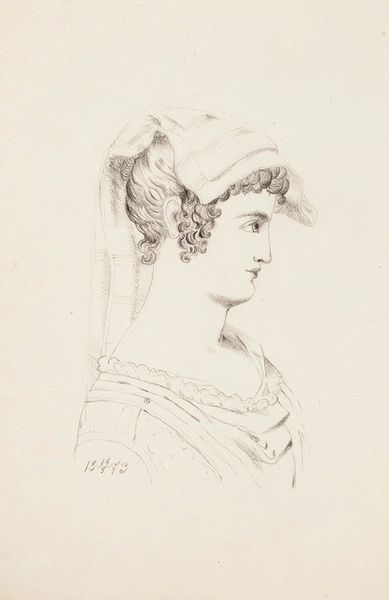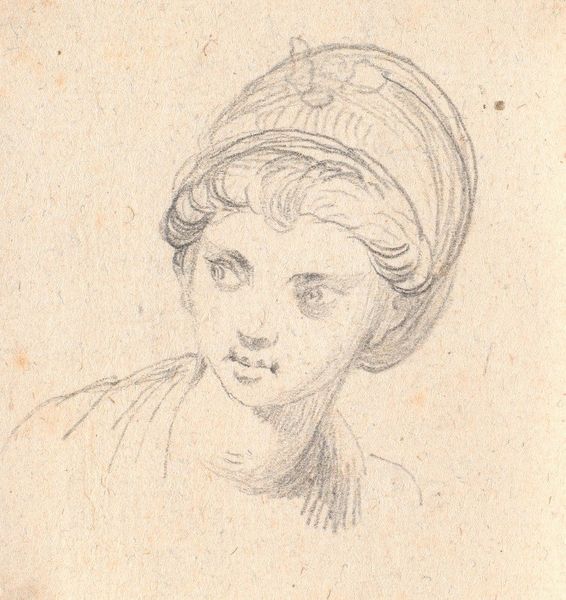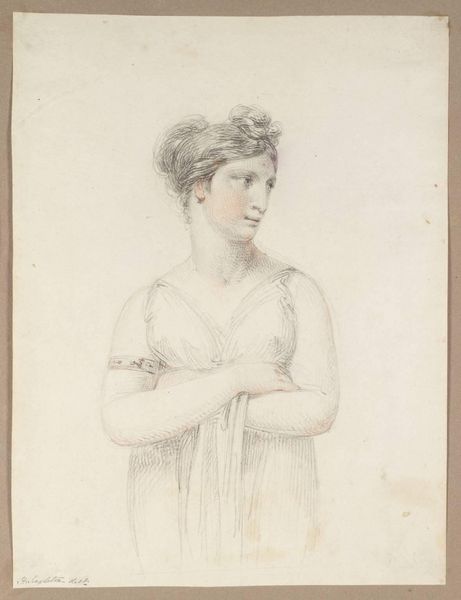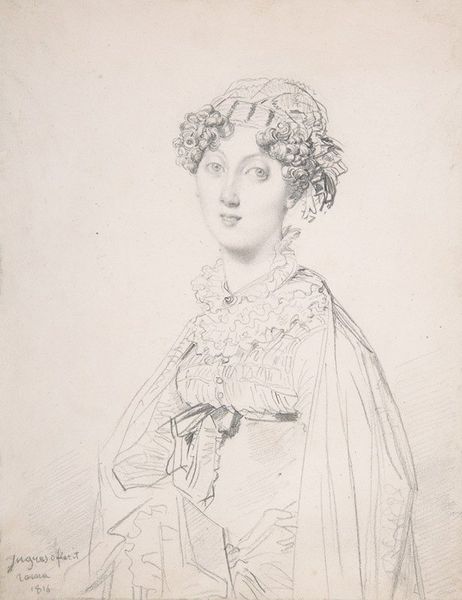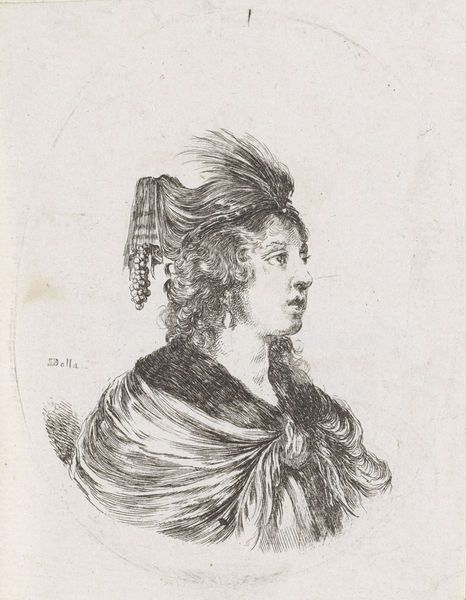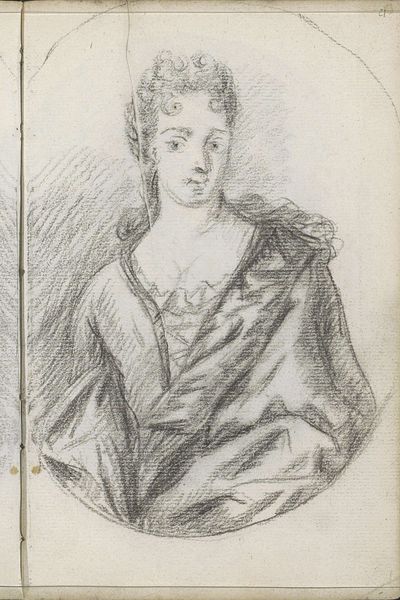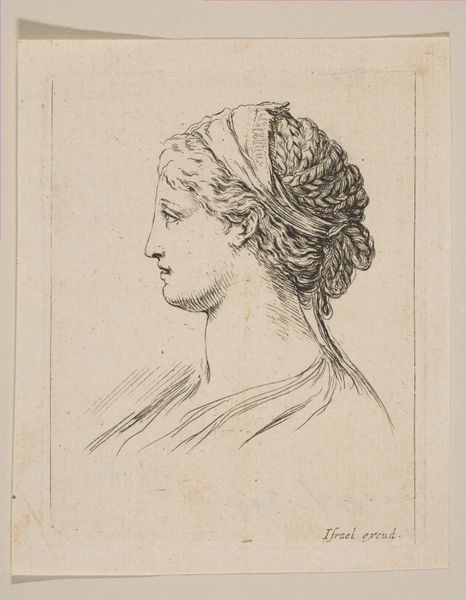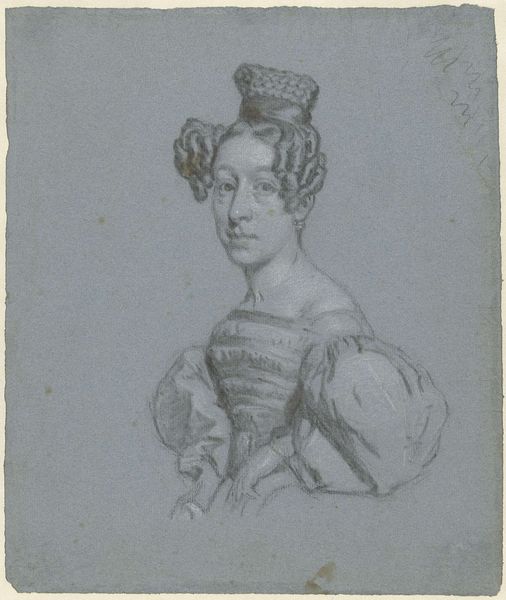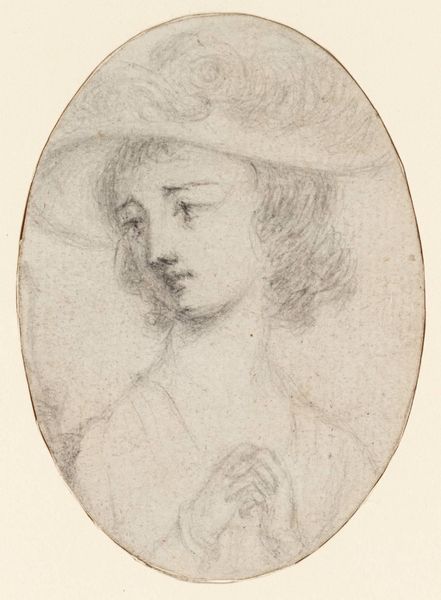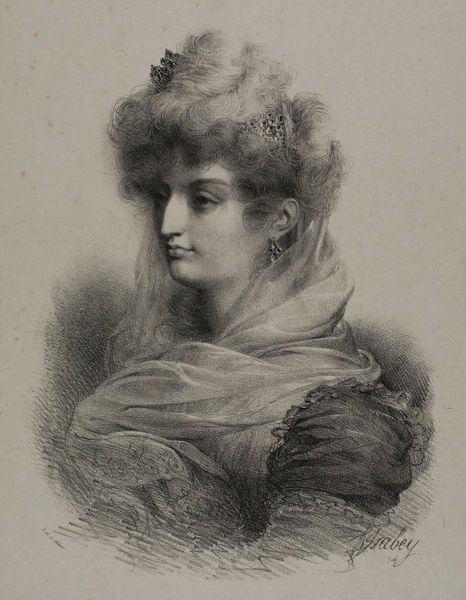
drawing, pencil
#
portrait
#
drawing
#
neoclacissism
#
facial expression drawing
#
pencil sketch
#
portrait reference
#
pencil drawing
#
pencil
#
animal drawing portrait
#
portrait drawing
#
facial portrait
#
academic-art
#
portrait art
#
fine art portrait
#
digital portrait
Copyright: Public Domain: Artvee
Pierre-Paul Prud'hon rendered this profile of Marie-Louise with delicate strokes. The laurel wreath, prominently adorning her head, echoes ancient Roman iconography, where it symbolized triumph and imperial power. This motif is no isolated flourish. We see it echoed across centuries. In Renaissance portraits, similar wreaths denote the virtue and glory of the sitter, linking them to classical ideals. But consider how the wreath's meaning evolves, or rather, how our perception of it shifts. What once signified military victory now hints at intellectual or artistic achievement. Such transformations are not merely stylistic choices; they reflect a deeper, collective memory. The laurel wreath taps into our subconscious understanding of power and success. It evokes an emotional response, triggering associations with historical figures. In the end, it's the enduring human need to symbolize achievement. We take comfort in these patterns, which weave history, memory, and emotion together into a visual language understood across ages.
Comments
No comments
Be the first to comment and join the conversation on the ultimate creative platform.
